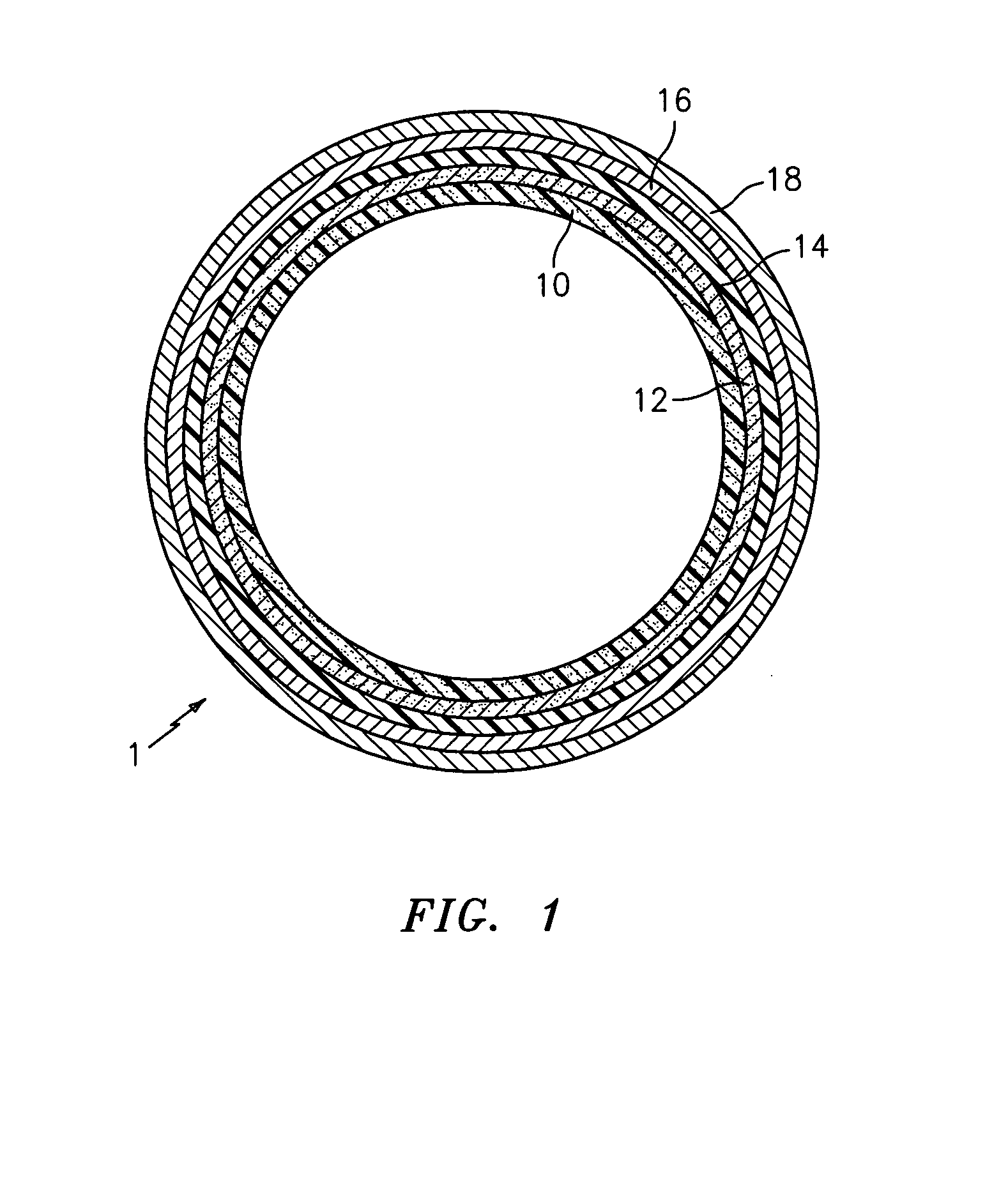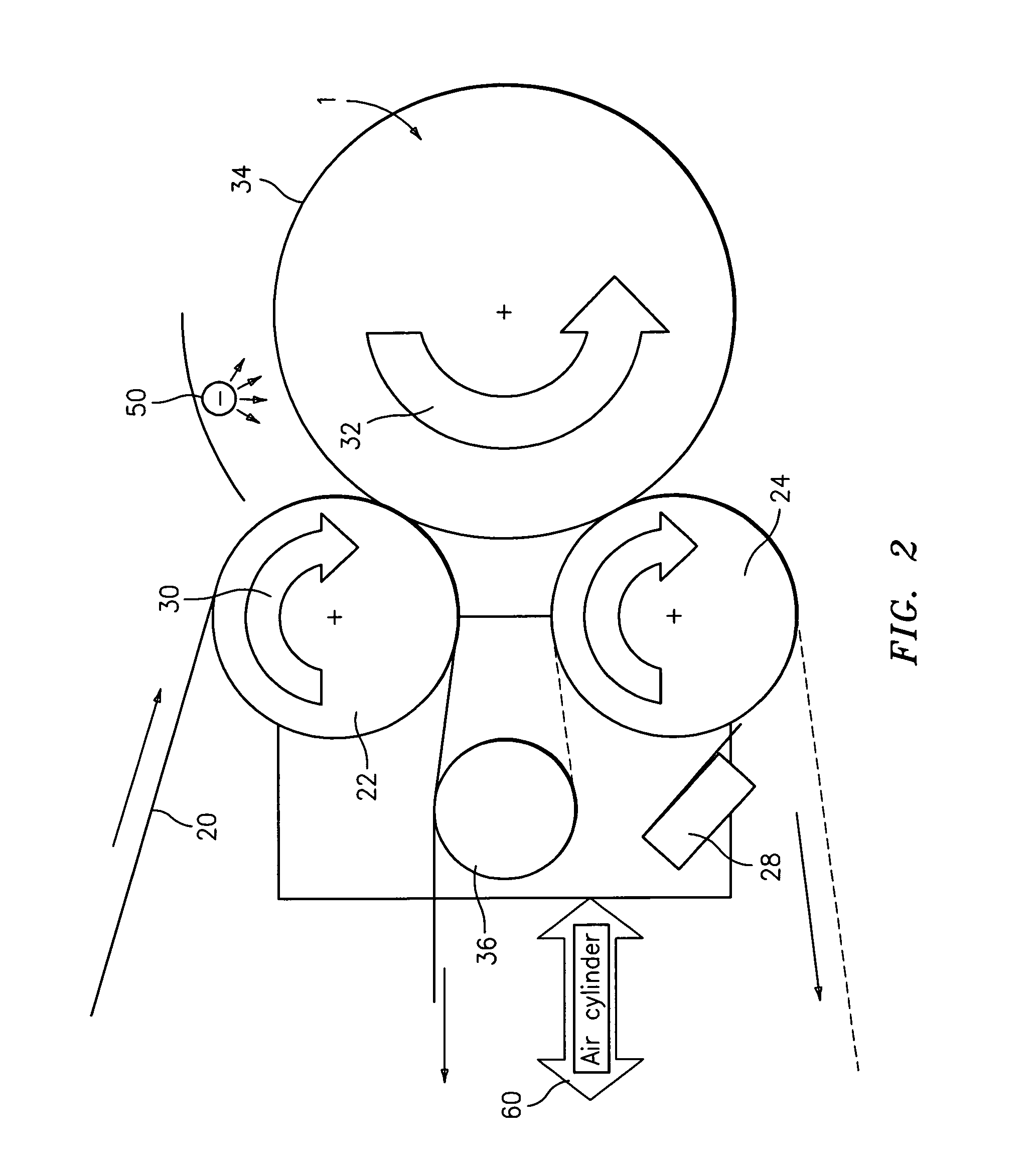Method for thermally processing photosensitive printing sleeves
a printing sleeves and thermal processing technology, applied in the field of thermal processing of photosensitive printing sleeves, can solve the problems of increasing the difficulty of making requiring a large amount of force (approximately 100 pounds/linear inch), and increasing the difficulty of printing elements of different sizes. to achieve the effect of reducing the variation of the floor layer
- Summary
- Abstract
- Description
- Claims
- Application Information
AI Technical Summary
Benefits of technology
Problems solved by technology
Method used
Image
Examples
Embodiment Construction
[0040]The present invention is directed to an improved method of thermally processing photosensitive printing sleeves that minimizes relief variation and improves image fidelity. The method of the invention pre-cures the floor layer of the photosensitive printing sleeve prior to removing non-crosslinked polymer from an imaged surface of the photosensitive printing element with at least one roll.
[0041]By pre-curing the first layer using traditional flood exposure techniques, the floor layer on the resultant printing element is more uniform from side to side. As a result, the image fidelity of the printing element is more pure, with fewer inconsistencies in the image areas across the sleeve. Furthermore, by pre-curing the first layer, the resultant floor layer is generally more tack free, reducing the tendency to build up ink, lint, and debris during the printing and storage process. The pre-cured floor also provides a distinct aesthetic advantage in the finished printing element, pro...
PUM
| Property | Measurement | Unit |
|---|---|---|
| temperature | aaaaa | aaaaa |
| temperature | aaaaa | aaaaa |
| thickness | aaaaa | aaaaa |
Abstract
Description
Claims
Application Information
 Login to View More
Login to View More - R&D
- Intellectual Property
- Life Sciences
- Materials
- Tech Scout
- Unparalleled Data Quality
- Higher Quality Content
- 60% Fewer Hallucinations
Browse by: Latest US Patents, China's latest patents, Technical Efficacy Thesaurus, Application Domain, Technology Topic, Popular Technical Reports.
© 2025 PatSnap. All rights reserved.Legal|Privacy policy|Modern Slavery Act Transparency Statement|Sitemap|About US| Contact US: help@patsnap.com



